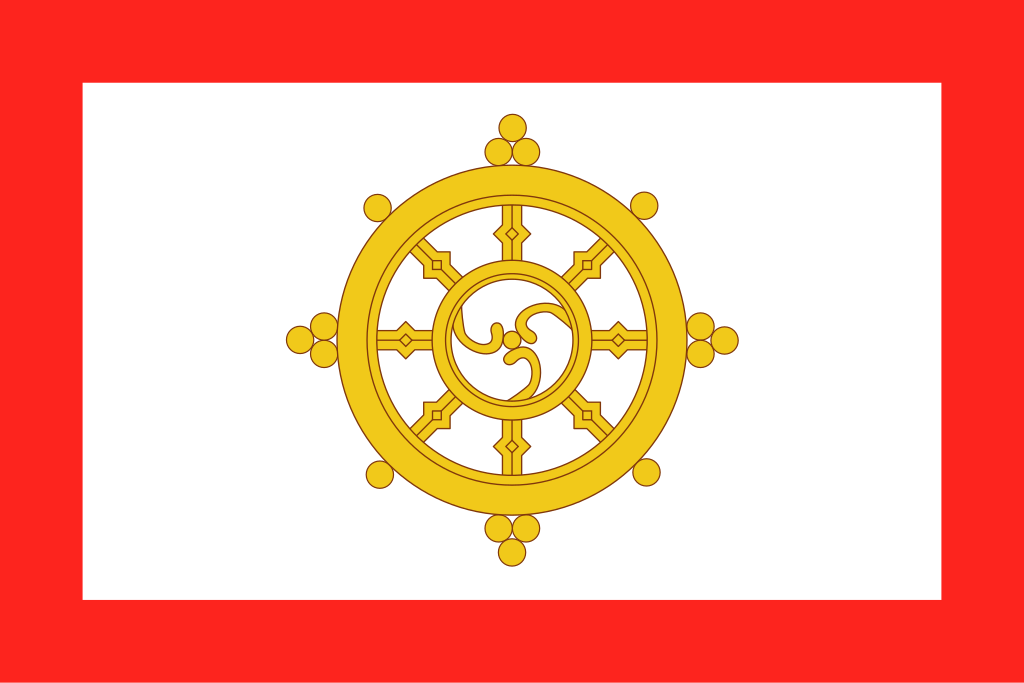I still think India would be divided. It's so large and diverse that I don't think it could fully stay together. I see peripheral regions breaking off, but the core of the Gangetic Plain staying unified as one large Indian state (probably called something like Hindustan).About British India, here the number of Muslims and Hindus might be equal, so, what that could mean? On one hand stronger influence of Muslims, and weaker of Hindus, so maybe power sharing is more likely? On the other hand, maybe Hindus will want their own country ITTL?
You are using an out of date browser. It may not display this or other websites correctly.
You should upgrade or use an alternative browser.
You should upgrade or use an alternative browser.
English Canada/French Carolina: A Timeline
- Thread starter Gabingston
- Start date
Threadmarks
View all 192 threadmarks
Reader mode
Reader mode
Recent threadmarks
Part 150: The World As Of 1970 World Map As Of 1970 Part 151: America Revisited - The Thirteen Colonies Part 152: America Revisited - The Great Lakes Part 152: America Revisited - The Great Plains Part 154: America Revisited - The West Coast Resource Guide: Commonwealth Of America Locations As Of Part 154 Russian Retcon Ideas (Could Be Contentious)I'm writing the update on the decolonization of the Indian Subcontinent right now. As of now, I have the majority of the British Raj fighting for independence against the British Empire (who still control areas like Bengal and Sindh), with the war starting in 1957 and being locked in a stalemate through the Early 60s. Eventually, the rebelling parts of India (adopting the name Hindustan) gain independence, with the rest becoming self-governing but still loosely affiliated with the empire.
Any comments?
Any comments?
Part 122: Indian Decolonization
Part 122: Indian Decolonization
Now that Southeast Asia is out of the way, it’s time to move on to the next area to be decolonized, the Indian Subcontinent. Since the first Portuguese voyages to India at the turn of the 16th Century, European countries and companies had been trading with India, establishing trading posts and influencing the native states of the region. Over the course of the 18th and 19th Centuries, however, European influence expanded out from the coast to encompass nearly the entire subcontinent. The British Empire had established control, whether through conquest or diplomacy, over the northern half of the subcontinent, while most of the South was under the control of the French.Around the middle of the 20th Century, however, it was becoming clear that colonialism in India was running its course. As in Southeast Asia, the native populations of the region were surging, and thus managing the colonies that were much larger in both land and population than the mother country was becoming much more difficult. With the growing populations and the formation of an educated native elite, nationalism was surging across the subcontinent, whether of the regional, religious or pan-Indian varieties. As a result, the western powers began to pull out of India in the 1950s, whether peacefully or by force.
As with the last update, I’ll go from the smallest colonial power to the largest. The smallest of the colonial powers in South Asia were the Danish. Being a rather small country, Denmark’s colonies in South Asia were limited to a small area around Trankebar and the Andaman and Nicobar Islands (EDIT: A&N Islands retconned to become German colony). In the 1950s, Denmark let go of their mainland territories, which later joined a new Southern Indian country I’ll get to later, while the Andaman and Nicobar Islands were incorporated as an overseas Danish territory, becoming a common stopover point for flights from Oceania to Europe.
The next colonial power in South Asia were the Dutch, who controlled both the island of Ceylon and the Maldive archipelago. With Ceylon being quite a heavily populated island, the Dutch gave it independence in 1959 as the Republic of Ceylon, while they held onto the Maldives until 1972, after which it gained independence from the Dutch.
Next, Portugal. While the Portuguese once had controlled much of the Indian west coast, they lost most of that after the First Global War, and were left just with the area of Goa and the Kathiawar Peninsula. With the Kathiawar Peninsula being rather large and populous, the Portuguese released it as an independent State of Kathiawar in 1967, with the capital located centrally in Rajkot. With the small and mainly Christianized Goa, however, the Portuguese kept it as part of the greater Luso-Brazilian Empire as the Kingdom of Goa, with the Emperor of Brazil and Portugal serving as head of state. As with the Andaman and Nicobar Islands, Goa became a favorite refueling place for flights from Europe to Australasia, which led to it becoming a popular tourist destination.
Those three colonial powers were all rather minor in the Indian Subcontinent. The other two colonial powers in India, Britain and France, weren’t so minor. The vast majority of the subcontinent was under the control of either the British or the French, with the Brits dominating the north and the French the south. The British Raj and the French Indian colony were so large that the British and French often ruled indirectly through local rulers, or Rajas. While areas like the coasts or the Gangetic Plain were under direct rule, the hinterland was generally ruled indirectly through the princely states. Some of the major British princely states included Jammu and Kashmir, Rajputana, Kalat and Cutch while some of the French princely states were Hyderabad, Mysore and Travancore. I’ll start with the French, the second biggest colonizer in India. As mentioned a few sentences ago, the French were dominant in Southern India, generally the area south of the Mahanadi and Tapi rivers, with the exception of the area around Bombay. The French ruled over the Dravidian speaking areas, as well as some of the bordering Indo-Aryans like the Marathi and Odia. Now, for how the French went about pulling out of this area. The French decided, after negotiating with independence leaders and the Rajas of their princely states, to unite the whole of their colony as the Deccan Federation (or Fédération Deccan in French), with its capital in Madras (the French colonial capital). The federation would consist of multiple constituent states corresponding to ethnic borders, except in areas controlled by the Princely States, which would remain as subnational monarchies. Travancore, the former Danish colony on the mainland, elected to join the federation as a new state, while Goa remained separate. Thus, on May 1st of 1962, the French flag was lowered and the new Deccan flag was raised all across the south. However, French would still have a large role in the country as a lingua franca, especially between the Dravidian majority and the Indo-Aryan minority. As for other demographic factors, the country was religiously diverse, with a Hindu majority of about 80% with Muslim and Christian minorities of about 10% each. In order to keep the minorities from being trampled on, freedom of religion was guaranteed for all, with the government not declaring any state religion. Ethnically, the centuries-long French presence did leave an impact, namely the sizable mixed French-Indian population numbering about 150,000. These people, known as the Parangs (coming from Farang, a Persian word for a European deriving from the Franks) mostly left for France and Terre-Bourbon after independence, but a minority stayed behind and acclimated to a post-colonial world.
Now, finally, it’s time to talk about the British Raj. The British Raj controlled over half of the subcontinent’s land and the strong majority of its population. The total population of the Raj was as large as the rest of the empire combined, and unlike the rest of the empire, the Raj wanted out. The British knew this, and were making plans and preparations to cut the Raj loose, but things unfortunately went south.
You see, in April of 1957, some British and American soldiers stationed near the central Indian city of Kanpur got drunk one night and thought “hey, wouldn’t it be a great idea if we violated some local women?”. Thus, these soldiers went and… engaged in some ungentlemanly activity. Naturally, the locals weren’t too pleased about this, and soon angry mobs were formed looking for the heads of the rapists. Other imperial troops, whether British, American or local Indian Sepoys were soon called in to restore order, but that only made things worse for the Raj as firefights broke out between large, poorly armed mobs and smaller but heavily armed British garrisons. The sepoys, being called in to defend soldiers who’d violated their own countrymen, defected en masse to form the new army for a rebellion that was rapidly spreading across the Gangetic Plain. Seeing revolts popping up all across the central part of the Raj, the National Union of Hindustan, the pro-independence organization from the last Indian update, decided that their time had come, and officially declared independence from the British Empire on June 20th, 1957, and started organizing a new Hindustani military, with covert supplies being sent in from the Russian Republic. Even though, as mentioned, decolonization of India was likely a few years away before the revolt, the British nonetheless found the revolt to be unacceptable, and officially committed to putting it down. Hundreds of thousands of troops were recruited or drafted across the empire, from Britain to America to The Philippines to Natal, and put on ships to Karachi or Calcutta, and from there they were sent to the front lines. The war turned out to be a rather close-fought affair, with the superior firepower and training of the empire being balanced out by the popular support and endless manpower of the Hindustanis. The Hindustanis would send massive human waves of men, to which the Imperials would respond with machine gun fire. Guerilla warfare was also common, with Hindustani civilians attacking Imperial troops out of the blue, before returning back into the endless Indian countryside. Throughout the duration of the war, the British held onto Bengal, the Northeast and the lower Indus valley, while the Hindustanis controlled the heartland of the Raj. However, even if they won, the British would still have to give self-rule to their Indian allies, as that was the condition they agreed to for areas like Bengal and Sindh not to rebel. Throughout the late 1950s and early 1960s, the war dragged on, and while both the Imperials and Hindustanis had won key victories, neither had gained a decisive edge. By 1962, the war had taken a large toll on both sides. For example, over 200,000 American troops had died, along with over 65,000 Brits and 20,000 Australians, which when combined with the lack of results, led to increasing war exhaustion, with effects any EU4 player would be familiar with. Indians fighting for the Empire also suffered great losses, with hundreds of thousands of Bengalis and Sindhis dying in the fighting. In Hindustan, due to the inferior weaponry and reliance on raw numbers to win battles, over a million men had died on the frontlines, with at least as many civilians dying. It was a true stalemate, the Imperials couldn’t advance into the Hindu heartland of India, but the Hindustanis couldn’t dislodge the Empire. By 1963, both sides were worn down and tired of war, and thus, they went to the negotiating table. After months of hard-pressed negotiations between The Empire, Hindustanis and Princely States, the 1964 Treaty of Calcutta was signed.
Treaty of Calcutta
16th of May 1964
- The Republic of Hindustan shall become a free and sovereign nation, comprising the regions of India it had majority control over. The capital of the new nation shall be Delhi.
- The British Empire shall recognize Hindustan as an independent nation.
- The Princely States of Jammu and Kashmir, The Balochistani States, Sikkim and Manipur shall be released from their status as Princely States.
- The regions of Bengal, Assam, Sindh, Punjab and Pashtunistan shall become independent states while retaining ties to the British Empire.
- Britain shall return the Burmese Coast to the Kingdom of Burma.
- The Republic of Hindustan shall recognize and protect the rights of ethnic and religious minorities within the country, as shall all of the newly independent states.
- All hostilities between the British Empire and Hindustan shall cease.
And with that, the age of colonialism in India was officially over. While they didn’t get everything they wanted, Hindustan had won its independence, and the British officially pulled out of the subcontinent. The British and other Anglo populations living in the former Raj left for Britain, America and Australia, as well as most of the 250,000 Anglo-Indians, although a small proportion stayed behind. What was the unified British Raj was now nine different independent countries, and the subcontinent was now free to choose its own destiny. India went from fully colonized to fully independent within the span of only a few decades, and whether that rapid shift would play out elsewhere is still to be seen. I would say “thank you, come again”, but I’d be cancelled if I said that, so I must simpy say goodbye, and I’ll see you next time!
Last edited:
So, we are now heading into the latter part of the 20th Century, OTL’s post-WW2 era, which is a time period that I’m still trying to figure out how to approach. On the one hand, this was quite a static and boring time in terms of military conflict and border changes. The vast majority of the changes in the borders of the world since 1945 either occurred through decolonization (which I’ve spent the last two updates covering) or through the fall of the Eastern Bloc, not through any sort of major war that could provide some material. On the other hand, the post-WW2 west has had extremely rapid social change for pretty much the entirety of that period, especially between 1960-1975 and 2005-present. It’s easy to assume that this is just the natural course of history, that the collapse of religion in the west (whether in Europe after WW2 or America beginning in the 1990s) was just bound to happen, but I’m not fully convinced.
Granted, some things that led to the decline in traditional religion in the west were probably inevitable. Scientific discoveries like evolution and the big bang obviously conflict with a literal interpretation of Genesis, along with critiques of organized religion coming from the Enlightenment, both of which would still apply ITTL (evolution was being theorized even before Darwin, astronomical discoveries were constantly being made in the 18th and 19th centuries, and the Enlightenment still occurs as per OTL). Economic development probably also played a sizable role in secularization, as someone living in an industrialized and wealthy country isn’t at constant risk of death, unlike someone in a pre-industrial country where famine or disease could come at any time, thus making being right with God less of an immediate priority.
However, I think there’s more to it than just that. For example, the French Revolution, despite one of its early leaders being a Catholic priest, was ardently secular, even flat out anti-religious at times, and it firmly established the political left as secularist, oftentimes violently anti-religious, which was only reinforced by the highly anti-religious Marxists becoming the dominant leftist ideology. However, the French Revolution never occurs ITTL, and while there would still be a secularist streak on the left due to the aforementioned Enlightenment skepticism towards religion, it probably wouldn’t be as prevalent without the revolution bringing it to the forefront, and there might be an internal divide between secularists and Christians ITTL’s western left.
Another factor IOTL’s secularization IMO was the sheer destruction caused by the world wars, and while there are two world wars ITTL, they were in the 1860s/70s and the 1910s, rather than the 1910s and 1930s/40s, meaning they weren’t all in all as destructive (especially with the absence of something as purely evil as The Holocaust occuring ITTL). The Traditional order dating back to the Middle Ages that coexisted along with the Liberal and Radical order that came out of the Enlightenment and the French Revolution throughout the 19th Century was for the most part wiped out While this means that the west most likely doesn’t become as hubristic and arrogant as it was in the late 19th Century, it doesn’t crash as hard into nihilism and self-loathing after the world wars, throwing away its traditional value system, for better and/or for worse. Now, I’m not saying TTL’s western world circa 2021 would be a theocracy (aside from the Papal State, which still exists ITTL), or even a semi-theocracy like pre-1990s Ireland, but an accurate comparison might be some eastern European countries like Poland or Romania where Christianity (whether Catholicism in Poland or Orthodoxy in Romania) is in large part baked into the national identity, even if a lot of people in those countries aren’t particularly devout, and from what I’ve heard has a secular undercurrent. I’m gonna pass this question on to you, though, and I’d like to hear your thoughts. I know I had a similar question a couple of years ago, but now that we’re getting to the time period where all these changes and shifts took place, I wanted to revisit it. I’ve made my case, and I’d like to hear yours.
Granted, some things that led to the decline in traditional religion in the west were probably inevitable. Scientific discoveries like evolution and the big bang obviously conflict with a literal interpretation of Genesis, along with critiques of organized religion coming from the Enlightenment, both of which would still apply ITTL (evolution was being theorized even before Darwin, astronomical discoveries were constantly being made in the 18th and 19th centuries, and the Enlightenment still occurs as per OTL). Economic development probably also played a sizable role in secularization, as someone living in an industrialized and wealthy country isn’t at constant risk of death, unlike someone in a pre-industrial country where famine or disease could come at any time, thus making being right with God less of an immediate priority.
However, I think there’s more to it than just that. For example, the French Revolution, despite one of its early leaders being a Catholic priest, was ardently secular, even flat out anti-religious at times, and it firmly established the political left as secularist, oftentimes violently anti-religious, which was only reinforced by the highly anti-religious Marxists becoming the dominant leftist ideology. However, the French Revolution never occurs ITTL, and while there would still be a secularist streak on the left due to the aforementioned Enlightenment skepticism towards religion, it probably wouldn’t be as prevalent without the revolution bringing it to the forefront, and there might be an internal divide between secularists and Christians ITTL’s western left.
Another factor IOTL’s secularization IMO was the sheer destruction caused by the world wars, and while there are two world wars ITTL, they were in the 1860s/70s and the 1910s, rather than the 1910s and 1930s/40s, meaning they weren’t all in all as destructive (especially with the absence of something as purely evil as The Holocaust occuring ITTL). The Traditional order dating back to the Middle Ages that coexisted along with the Liberal and Radical order that came out of the Enlightenment and the French Revolution throughout the 19th Century was for the most part wiped out While this means that the west most likely doesn’t become as hubristic and arrogant as it was in the late 19th Century, it doesn’t crash as hard into nihilism and self-loathing after the world wars, throwing away its traditional value system, for better and/or for worse. Now, I’m not saying TTL’s western world circa 2021 would be a theocracy (aside from the Papal State, which still exists ITTL), or even a semi-theocracy like pre-1990s Ireland, but an accurate comparison might be some eastern European countries like Poland or Romania where Christianity (whether Catholicism in Poland or Orthodoxy in Romania) is in large part baked into the national identity, even if a lot of people in those countries aren’t particularly devout, and from what I’ve heard has a secular undercurrent. I’m gonna pass this question on to you, though, and I’d like to hear your thoughts. I know I had a similar question a couple of years ago, but now that we’re getting to the time period where all these changes and shifts took place, I wanted to revisit it. I’ve made my case, and I’d like to hear yours.
I had the North Island being colonized by Denmark and the South Island colonized by Sweden, but I may revise it if I do a Maps & Graphics TL in the future.Whats happenig in new zeeland ? i have to know
I want to know the population in the present and some eventsI had the North Island being colonized by Denmark and the South Island colonized by Sweden, but I may revise it if I do a Maps & Graphics TL in the future.
That's actually something I was gonna post about. Whether or not nuclear weapons exist ITTL is a huge question.About science, anybody thinking about splitting the atom yet?
I had the three major political parties in the Commonwealth being the Tories, Liberals and Labour (I'm assuming the Commonwealth would use British spelling). In La Floride, I think the main party I came up with was the National People's Party, which is economically populist and socially a mix of nationalism, Catholicism and the earliest stages of Florida's move away from racism.What are some of the big political parties in the Commonwealth and Florida?
I'll post my same decolonization polls for Africa that I did with Asia. Keep in mind that European control is limited to the coasts except in the Southern Third.

 strawpoll.com
strawpoll.com

 strawpoll.com
strawpoll.com

When does Africa get decolonized? - Online Poll - StrawPoll
What's your opinion? Vote now: 1950s, 1960s, 1970s, 1980s, 1990s, 2000s/2010s, Never...

How is Africa decolonized? - Online Poll - StrawPoll
What's your opinion? Vote now: Peaceful exit by Europeans, Revolution/War, Greater autonomy within European Empires, A mix of all three....
Threadmarks
View all 192 threadmarks
Reader mode
Reader mode
Recent threadmarks
Part 150: The World As Of 1970 World Map As Of 1970 Part 151: America Revisited - The Thirteen Colonies Part 152: America Revisited - The Great Lakes Part 152: America Revisited - The Great Plains Part 154: America Revisited - The West Coast Resource Guide: Commonwealth Of America Locations As Of Part 154 Russian Retcon Ideas (Could Be Contentious)
Share:

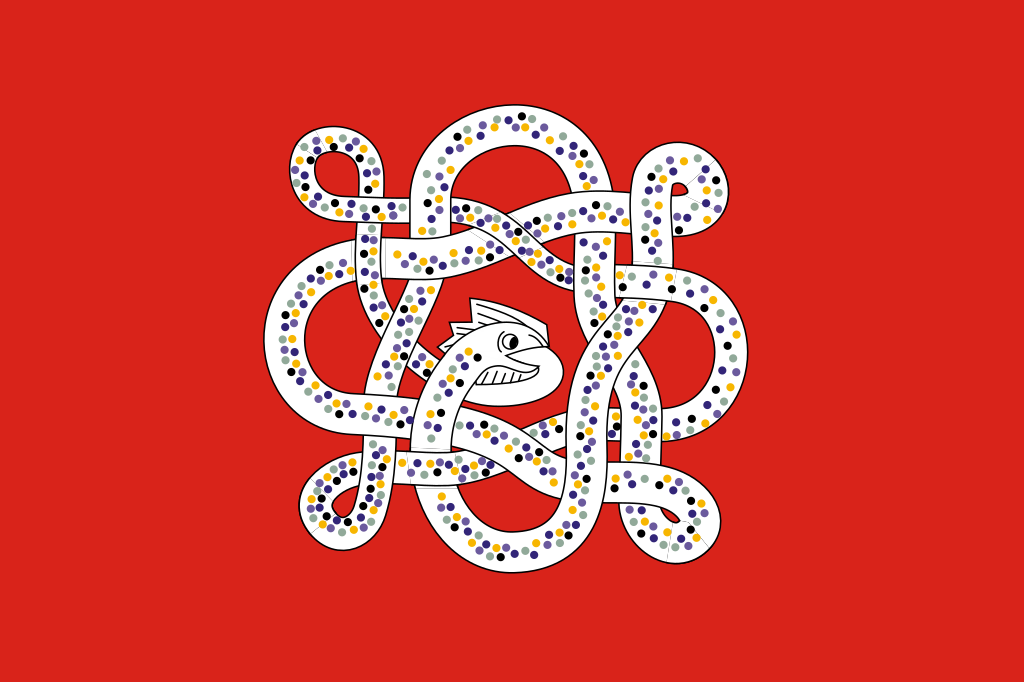
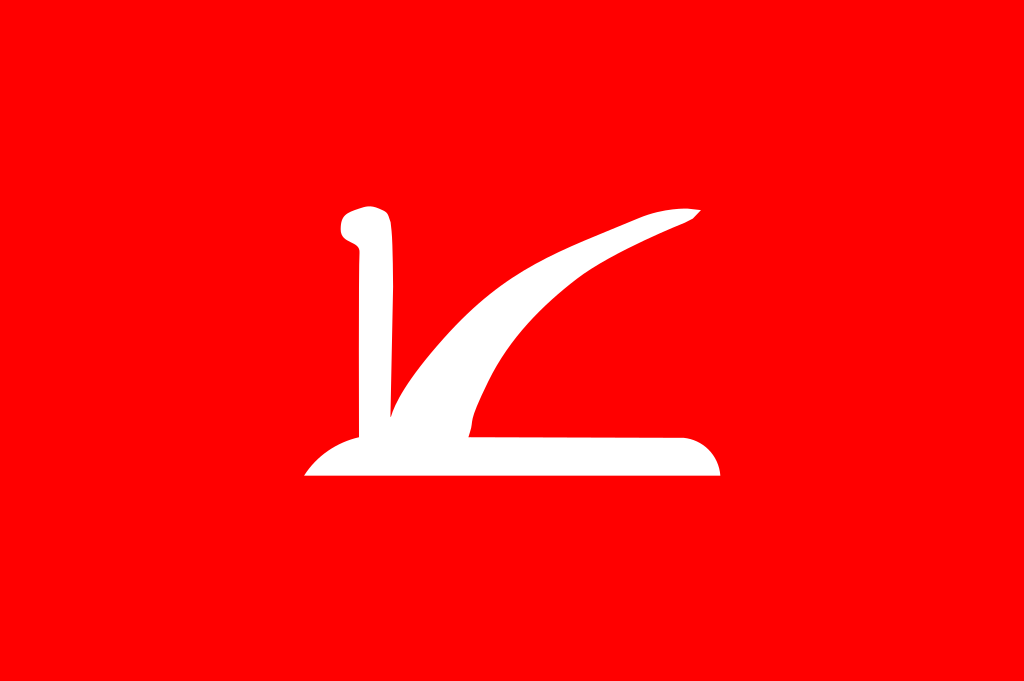
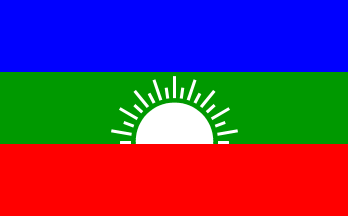




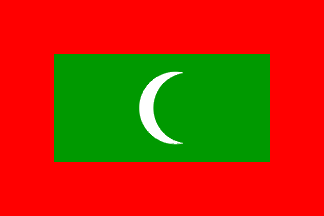
![[Portuguese India flag] [Portuguese India flag]](https://www.crwflags.com/fotw/images/i/in-goa_pre1962.gif)
